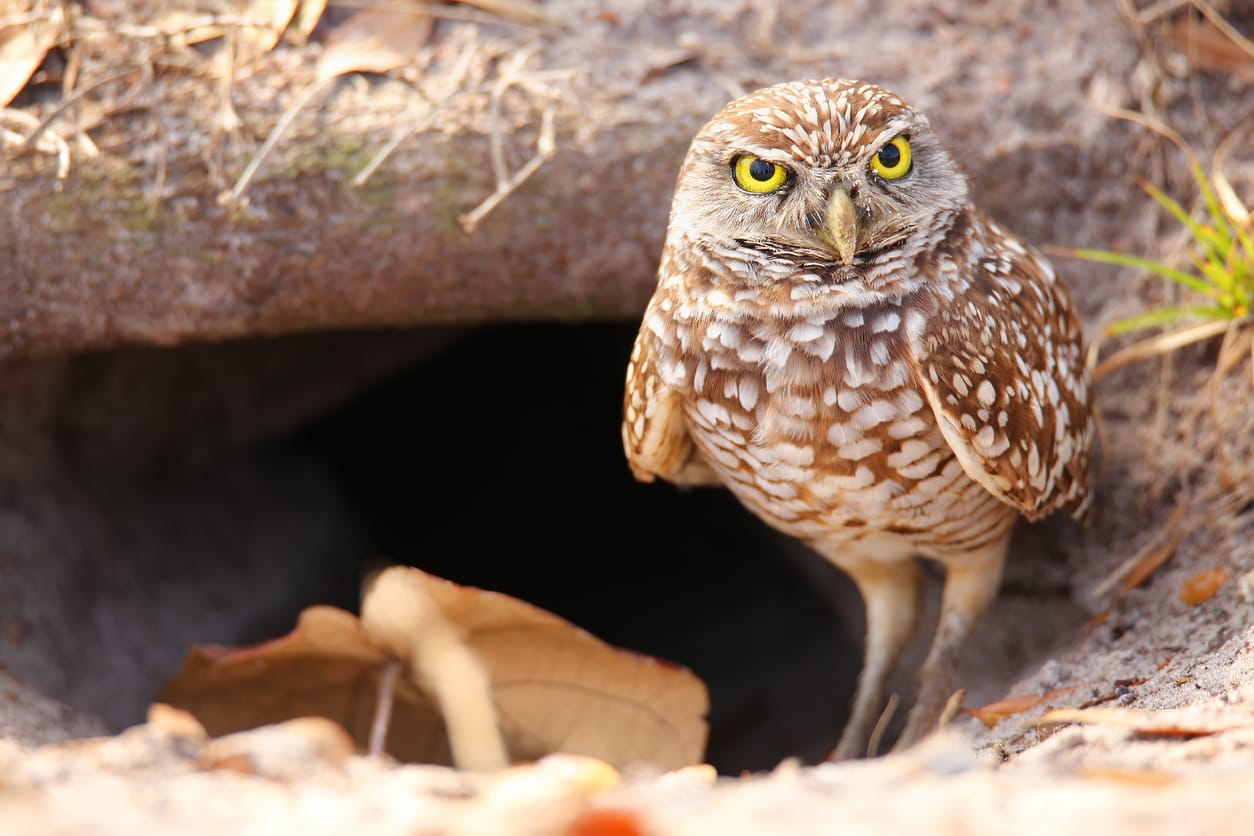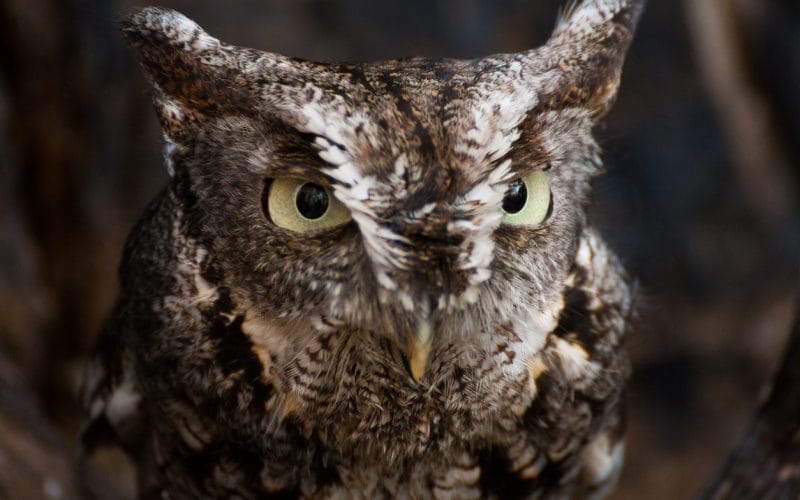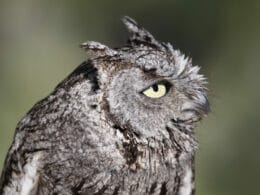California, nicknamed The Golden State, is famous for its diverse terrain. This western state has it all—from redwood forests, various mountain ranges, farmland, and deserts!
Then, there are the nine national parks and 280 state parks! That’s more than any other state, making California a unique and dynamic habitat for all types of wildlife.
This post focuses only on one species: the wise owl. In Southern California, there are 14 different types of owls. Most of them stay year-round to enjoy the state’s Mediterranean climate, whereas only a few are migratory.
Read ahead to find out more about these fascinating creatures.
Owls in Southern California to Look Out For
Here are the 14 most common owl species that call Southern California their home. Take a look
1. Barn Owl
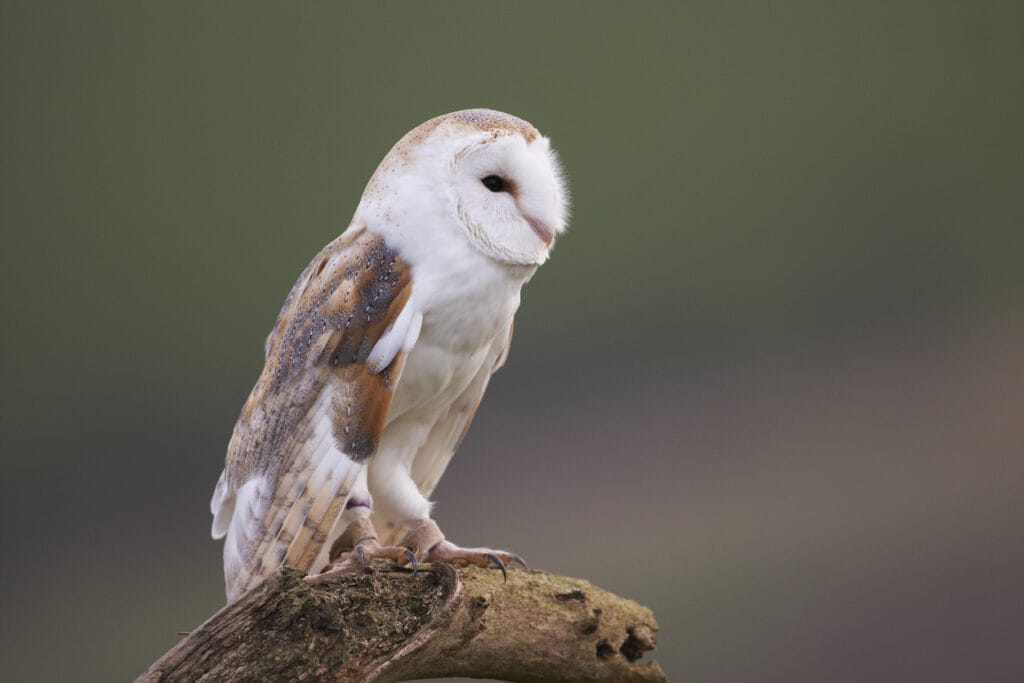
- Scientific Name: Tyto alba
- Length: 12.5 – 16 in
- Weight: 14 – 25 oz
- Wingspan: 30 – 49 in
The name says it all: Barn Owls prefer nesting in old, abandoned barns. You can also find them in lowlands, cliff sides, and trees. In fact, they’re one of the most commonly seen owls in Southern California. They usually come out at dusk and dawn, where you can spot them flying close to the ground, searching for food.
Author Note: These raptors are also known for their white faces and pale white plumage. Yet, their massive wings are mottled brown or gray feathering with black bars.
Yet, their most amazing trait is their keen sense of hearing. Their ears aren’t symmetrical but slightly offset by about 0.4 inches. This asymmetry boosts its ability to triangulate sounds with increased precision.
2. Barred Owl

- Scientific Name: Strix varia
- Length: 17 – 20 in
- Weight: 17 – 37 oz
- Wingspan: 39 – 43 in
Barred Owls are famous for the wide horizontal dark-colored bars on their wings and upperparts. In addition, their broad wings have rounded tips, which help them glide smoothly and with zero flight noise.
They prefer inhabiting swamps or forests near rivers. This helps them find a more expansive assortment of prey, ranging from rodents and birds to reptiles and amphibians.
Yet, their most interesting feature is their unique call. You’ll know it as soon as you hear it because it sounds like they’re saying, “Who cooks for you?”
3. Burrowing Owl
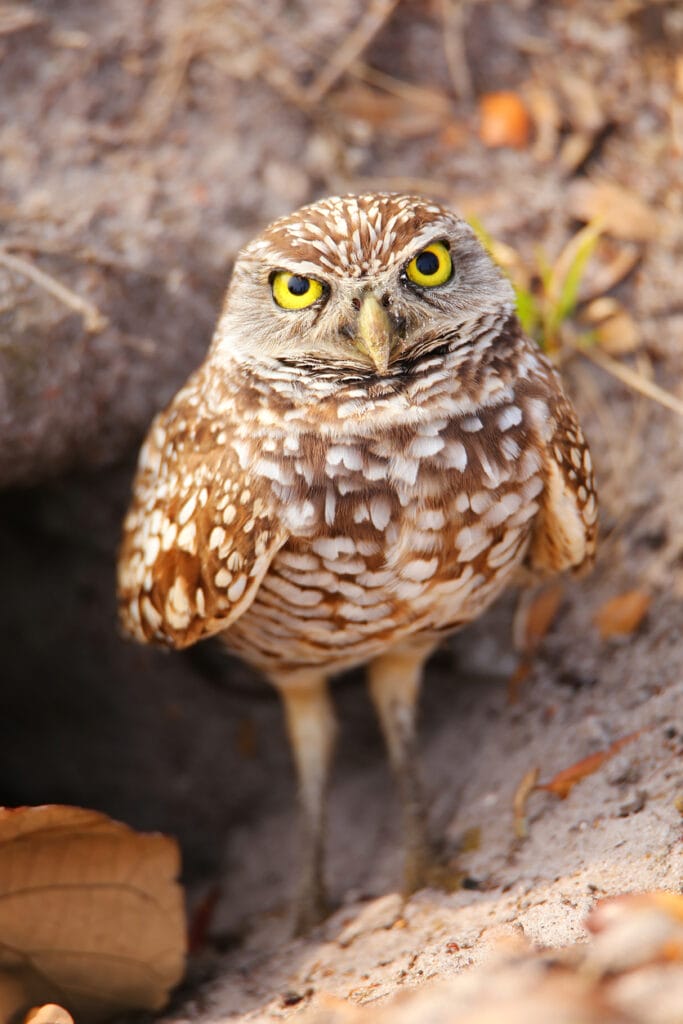
- Scientific Name: Athene cunicularia
- Length: 7.5 – 10 in
- Weight: 4.5 – 9 oz
- Wingspan: 21 – 24 in
You can spot Burrowing Owls throughout the year, primarily in dry, open regions. They’re on the smaller size, with the adults reaching only nearly 10 inches long. Nevertheless, they’re more active during the day, so you’re sure to come across one flying by.
As you can guess from their names, these raptors prefer nesting in abandoned holes and underground burrows in open fields and even suburban areas. That’s one of their unique characteristics that sets them apart from other owl species.
Unfortunately, their numbers are decreasing. The leading cause is that their nesting territories are being plowed through for agriculture, commercial, or residential development.
4. Elf Owl
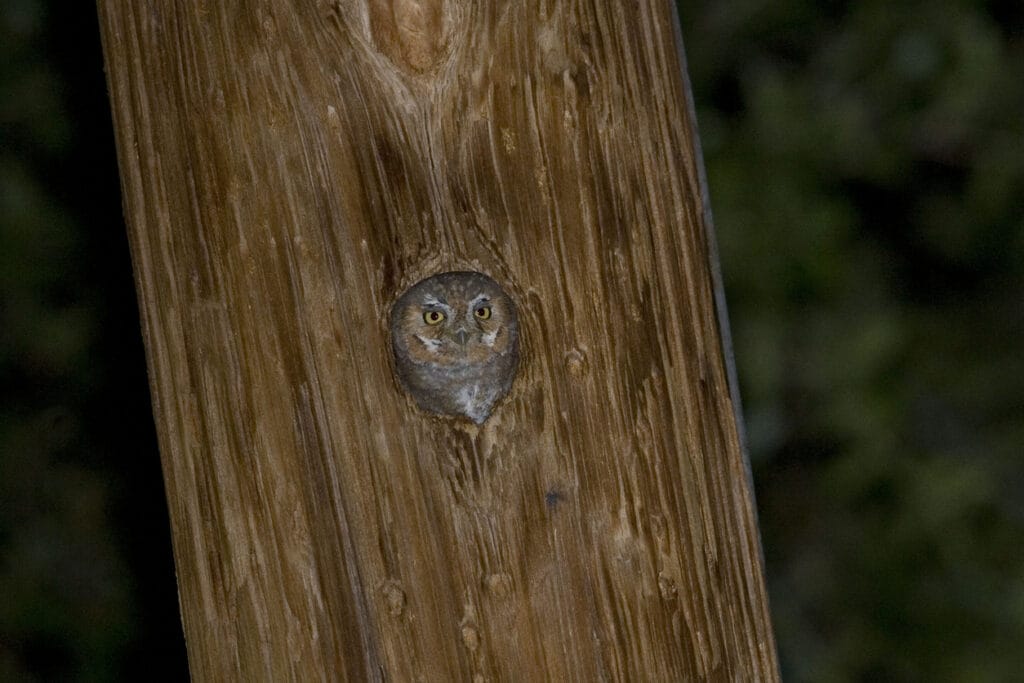
- Scientific Name: Micrathene whitneyi
- Length: 5 – 5.5 in
- Weight: 1 – 2 oz
- Wingspan: 10 – 10.5 in
While we have two small owls on this list, nothing comes close to the Elf Owl. With a maximum length of a little less than six inches, these raptors are probably the smallest owls worldwide. Unfortunately, they’re so small that they commonly fall victim to attacks from larger owl species.
You can look for these migratory birds in Southern California during spring and summer, where they like to inhabit cavities left behind by woodpeckers. In winter, they typically fly down to Mexico to enjoy some warm weather.
Author Note: Given their small size, their prey has to be relatively small as well. They mainly feed on arthropods, insects, and sometimes even small lizards.
5. Flammulated Owl
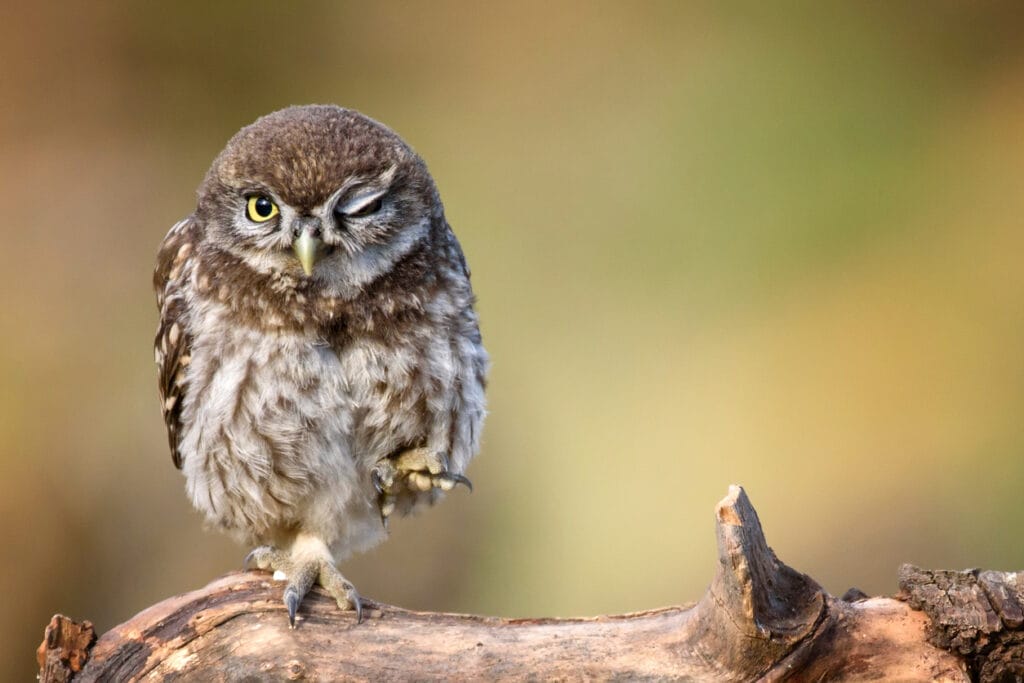
- Scientific Name: Psiloscops flammeolus
- Length: 6 – 7 in
- Weight: 1.5 – 2.5 oz
- Wingspan: 16 – 16.5 in
Flammulated Owls are known for being tiny, but they’re still voracious eaters, considering how small they are. However, unlike most other raptors, these small predators feed on insects, primarily beetles, moths, and crickets.
Being small and lightweight makes capturing their prey more effortless. They’re known to glide and catch insects in flight. They also forage on the ground or on low tree branches.
Unfortunately, Flammulated Owls are quite shy. Plus, their plumage is mostly dark colors to help them blend in with their surroundings. So, you’ll probably hear them more often than actually see them. Keep an ear out for them in the late spring and early summer months when they fly to Southern California for their breeding season.
6. Great Horned Owl

- Scientific Name: Bubo viginianus
- Length: 18 – 25 in
- Weight: 32 88 –oz
- Wingspan: 40 – 57 in
The Great Horned Owl is the most common in Southern California. It has the widest range in North America, so you’ll spot them easily enough. Yet, we should warn you that they’re famous for being hostile towards other birds of prey, even other owls.
These year-round Californians nest in a range of habitats, including grasslands, wetlands, meadows, and deserts. They’ve even been known to nest in suburban areas.
Because their habitats are so diverse, so is their appetite. They’ll eat everything from large mammals and birds to insects and reptiles.
7. Great Gray Owl
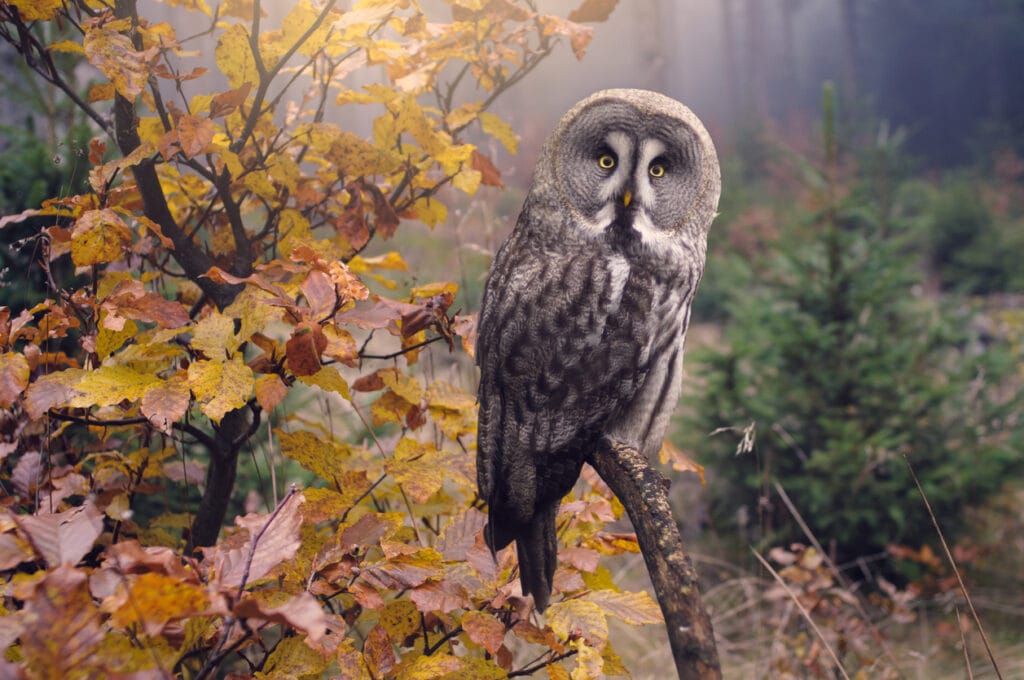
- Scientific Name: Strix nebulosa
- Length: 24 – 33 in
- Weight: 24.5 – 60 oz
- Wingspan: 54 – 60 in
Great Gray Owls are the tallest owls in North America, if not the world. Combined with their silvery-gray plumage and piercing yellow eyes, they’ve earned a variety of nicknames, including Phantom of the North and the Great Gray Ghost.
Top Tip: The habitats of these mesmerizing non-migratory raptors range from the boreal forests in the north down to Southern California.
Although, your best chance of spotting them is in the Sierra National Forests and Yosemite National Park. they’re primarily nocturnal, except during mating season when they hunt in the daytime.
Sadly, their numbers started dwindling in California due to deforestation and humans taking over their habitats. Back in 1980, they were listed as endangered back in 1980 according to the California Endangered Species Act.
8. Long-eared Owl
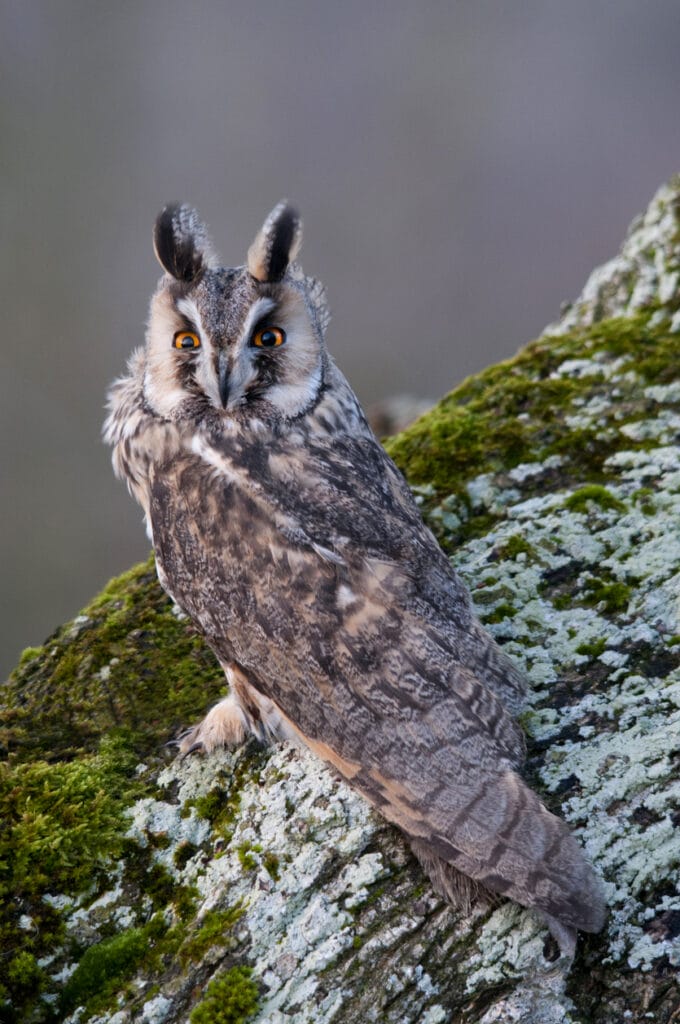
- Scientific Name: Asio otus
- Length: 13 – 16 in
- Weight: 8 – 15 oz
- Wingspan: 35.5 – 39.5 in
Long-eared owls are easy to identify with their prominent tufts of feathers sticking upright over their ears. They’re easy to spot because they spend the whole year in The Golden State, and they’re diurnal.
Yet, sometimes, they’ll prefer roosting at high elevations during the day and hunting at night. These raptors have such keen hearing that they can hunt in pitch-black darkness without fail.
One of their most distinctive features is their hoots, which come in a variety of sounds, including squeals, barks, and even catlike mews. The female’s call is usually higher in pitch than the male’s., but both rarely call in mid-flight. They usually hoot when alarmed, exchanging food, and during breeding season.
9. Northern Pygmy-Owl

- Scientific Name: Glaucidium gnoma
- Length: 6 – 7 in
- Weight: 2 – 2.5 oz
- Wingspan: 14.5 – 15 in
Short, stocky, and extremely cute, the Northern Pygmy-Owl is one of the smallest raptors on our list. It only grows up to six or seven inches maximum!
Yet, despite their small size, they’re just as vicious as most of the flying predators on our list. They’re known to attack prey much larger than they are without giving it a second thought. They’re also pretty smart, which is why they prefer hunting at night to avoid running into any of the larger birds of prey.
Look for them in high branches or coniferous forests, wooded canyons or thickets. We should also mention that songbirds are their favorite food. So, anywhere there’s a mob of songbirds, you can be sure there’s a Pygmy-Owl nearby.
10. Northern Saw-whet Owl
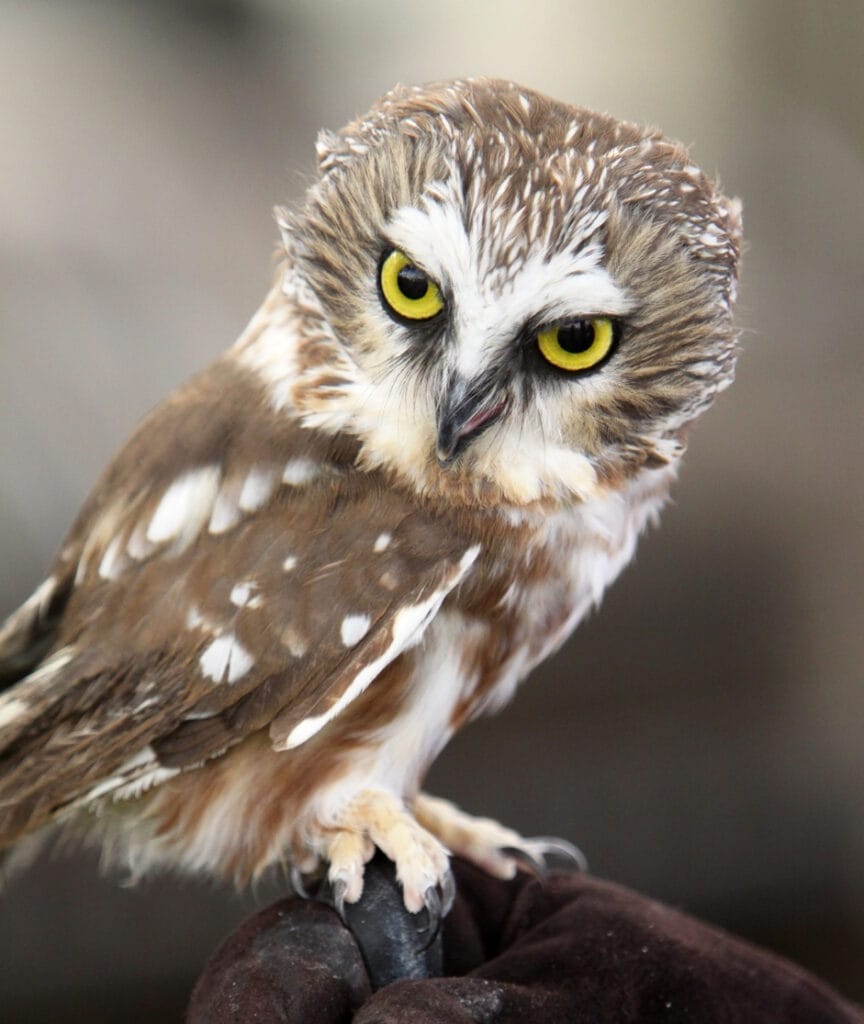
- Scientific Name: Aegolius acadicus
- Length: 7 – 8.5 in
- Weight: 2.5 – 5.5 oz
- Wingspan: 16.5 – 19 in
The Northern Saw-whet Owls are medium-sized raptors that live in the woodlands and dense forests of Southern California. Yet, they’ve grown accustomed to humans, so don’t be alarmed if you spot one in your own backyard.
Top Tip: Unlike other owls, the Northern Saw-whet is pretty easy-going. So it’s not strange to find one perching on a tree branch enjoying the afternoon sun.
This sitting in complete silence could also be how they hunt since they’re known for their excellent hearing and vision. Once they zero in on their prey, they grab it and carry it back home with their talons. There, they break it into pieces with their beaks, then sit back and enjoy their food.
11. Short-eared Owl
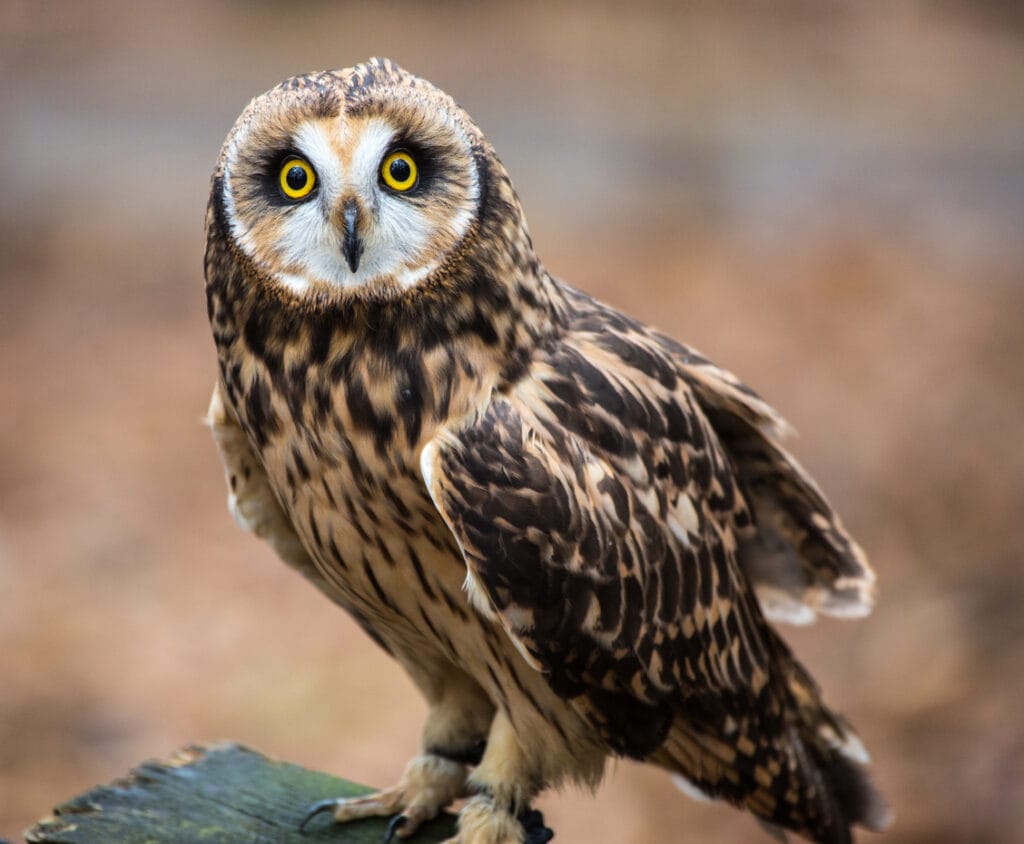
- Scientific Name: Asio flammeus
- Length: 13.5 – 17 in
- Weight: 7.5 – 17 oz
- Wingspan: 33.5 – 40.5 in
Short-eared Owls are named for the inconspicuous, small tufts of feathers near their ear openings. These average-sized raptors have brown plumage and are known for their relatively large wings and prominent facial disks.
A notable feature is their broad flight feathers with serrated edges that stick up from the wing structure. This wing design helps decrease flight noise, which allows them to fly completely unnoticed by their prey.
They’re active during the day and year-round residents of Southern California, which increases your chances of spotting one. You can usually find them in open fields and meadows. They like flying close to the ground when searching for food.
12. Snowy Owl

- Scientific Name: Bubo scandiacus
- Length: 20.5 – 28 in
- Weight: 56.5 104 oz
- Wingspan: 49.5 – 57 in
Snowy Owls are like the royalty of the owl family. They glide effortlessly with such breathtaking finesse and grace that they look like they’re floating in mid-air. Yet, don’t let their beauty fool you. They’re pretty fearless and will attack anyone or anything that comes close to their nest. It’s been reported that they even attack arctic wolves!
Yet, they’re pretty rare in Southern California. Instead, they prefer more northern regions where they can blend in better in the snow and white backdrop of the arctic tundra.
If they do happen to appear during their winter migrations, you can spot them in spacious, open fields. If you do spot one, you’ll immediately know it’s a Snowy Owl because its stunning white plumage with dark horizontal lines will stop you in your tracks!
13. Spotted Owl

- Scientific Name: Strix occidentalis
- Length: 18.5 – 19 in
- Weight: 17.5 – 25 oz
- Wingspan: 35 – 40 in
Getting a chance to find a Spotted Owl can be challenging, even though they’re year-round residents of Southern California. Yet, they’re listed as threatened under the 1990 Endangered Species Act. This is a direct result of logging old-growth forests, which are the Spotted Owl’s primary habitat.
Another reason that makes them difficult to find is that they’re always competing with the much fiercer Barred Owl. Also, Spotted Owls are highly nocturnal. It’s when they can hunt for their food, which mostly consists of small rodents.
These raptors get their name from the white spots covering their deep brown plumage. They can also be identified with their short tails, round heads, and broad wings with rounded tips.
14. Western Screech-Owl
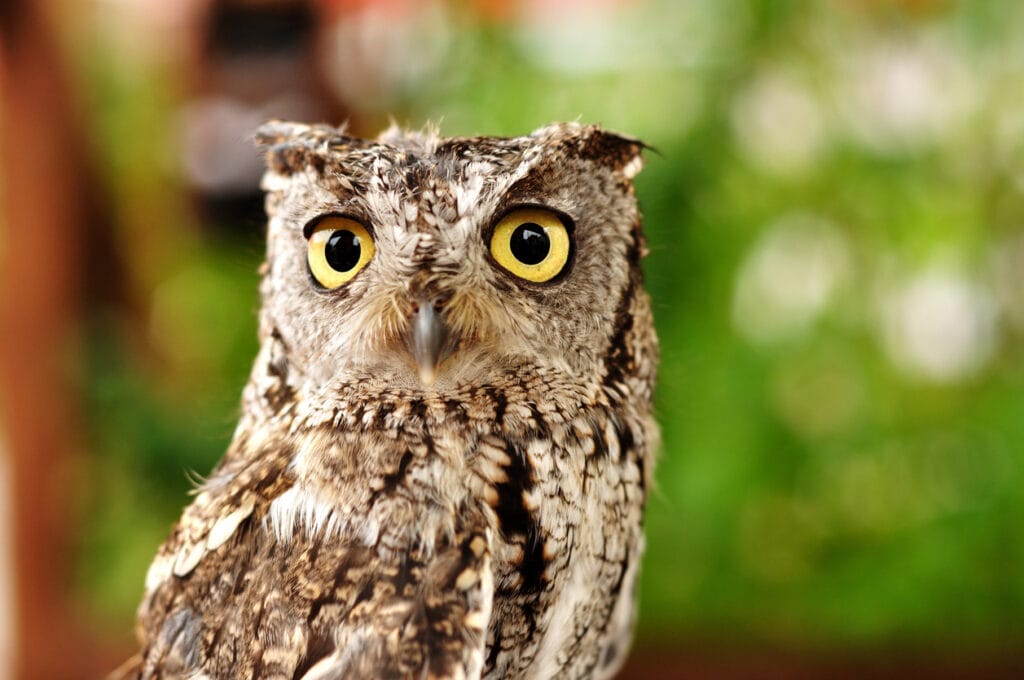
- Scientific Name: Megascops kennicottli
- Length: 7.5 – 10 in
- Weight: 3.5 – 11 oz
- Wingspan: 21.5 – 24.5 in
The third most common owl in Southern California is the Western Screech. Yet, being nocturnal—combined with its medium size and motley-colored plumage—can be hard to locate sometimes. Still, it’s a year-round resident, so you have more chances of spotting it at various times throughout the year.
Author Note: While their habitats cover multiple regions, they prefer making their homes to the west of the Rockies. They also like being in forests near bodies of water where there’s plenty of food.
Their diet includes large ducks, mammals, and birds. As is the case with most ruthless raptors, they’re not afraid to attack prey twice their size.
Conclusion
Whether you also call The Golden State your home like these owls in Southern California or you’re just passing by, take our handy guide with you. This way, you’ll never miss a chance to catch a glimpse of these majestic flying predators in their natural habitats.
We hope you thoroughly enjoyed our guide on the most common owls in Southern California!
FAQ
Audubon recommends these places to start when looking for owls: Yosemite National Park, Salton Sea.
The Barn and Great Horned Owl are the most common species of owl seen in Southern California.
To find out where recent sightings of owls have been, try eBird. You can search for the latest sightings or particular species or what has been seen in a certain area.




